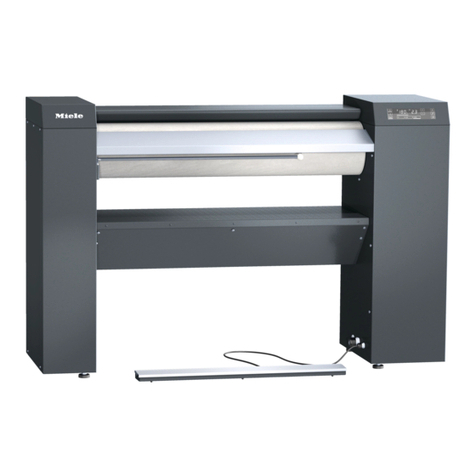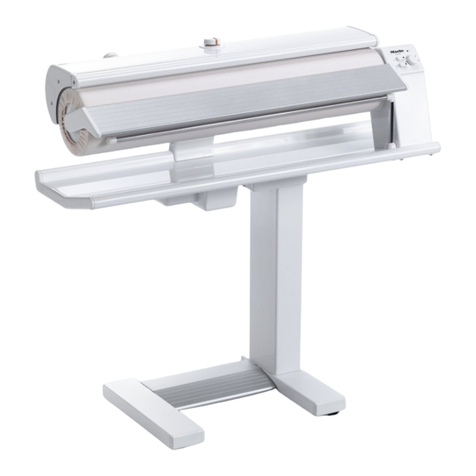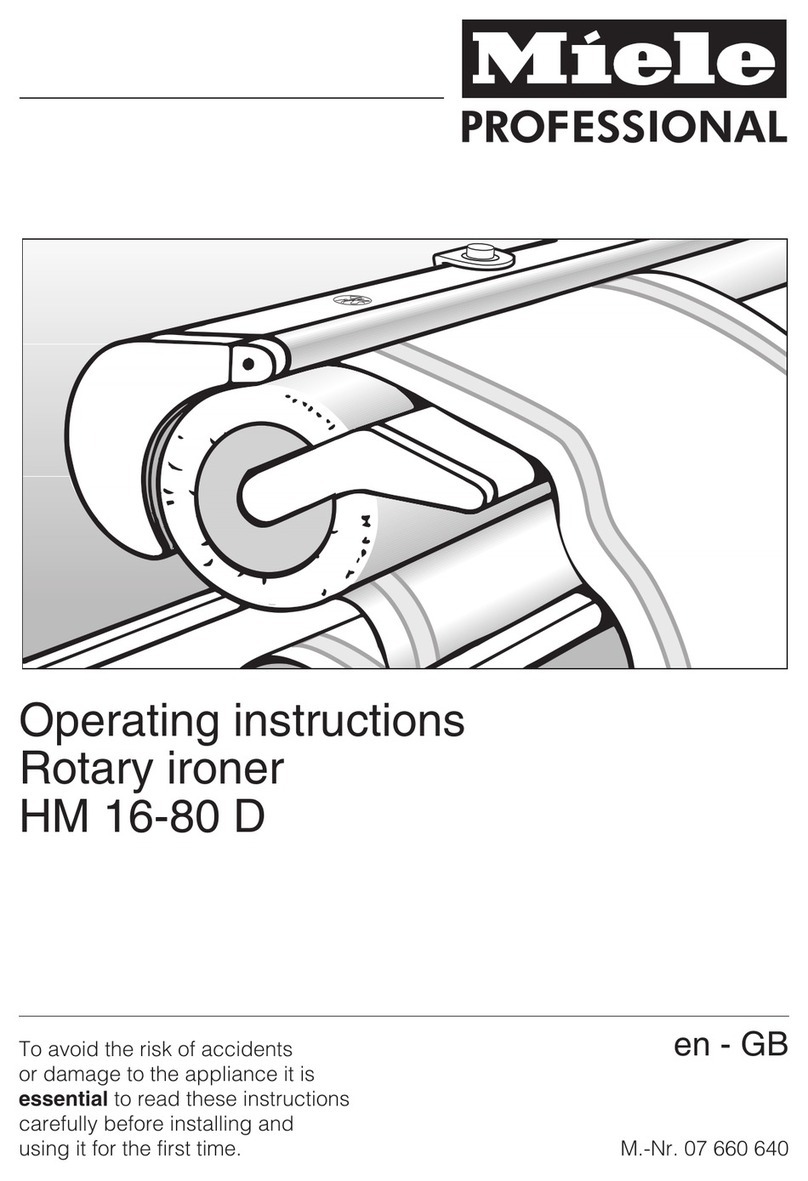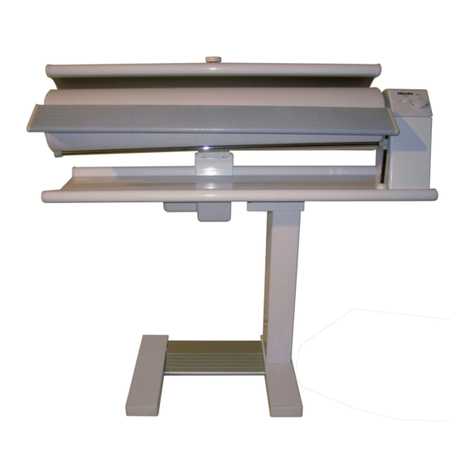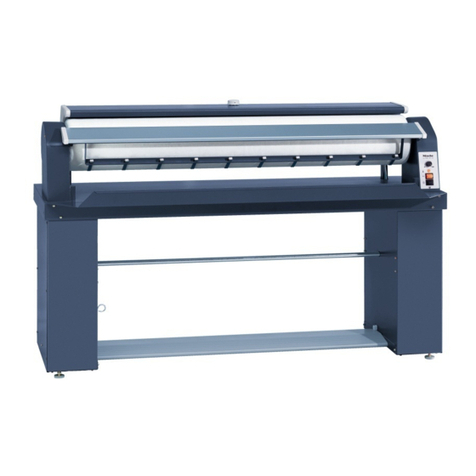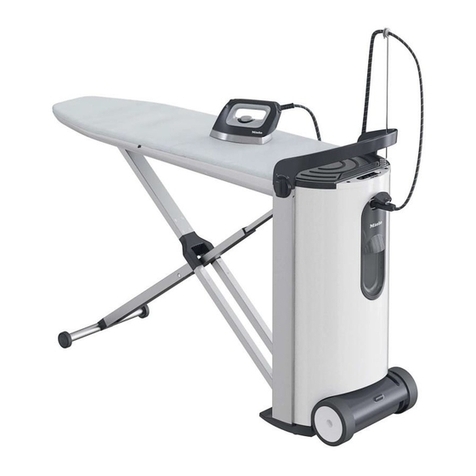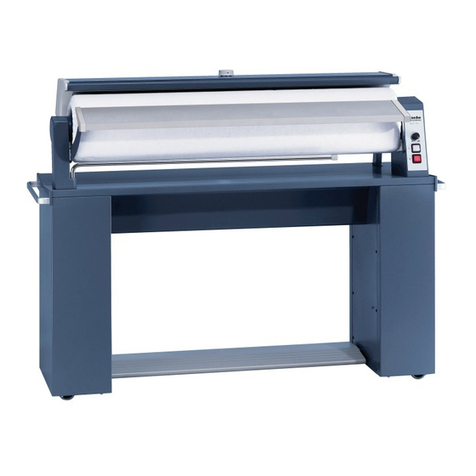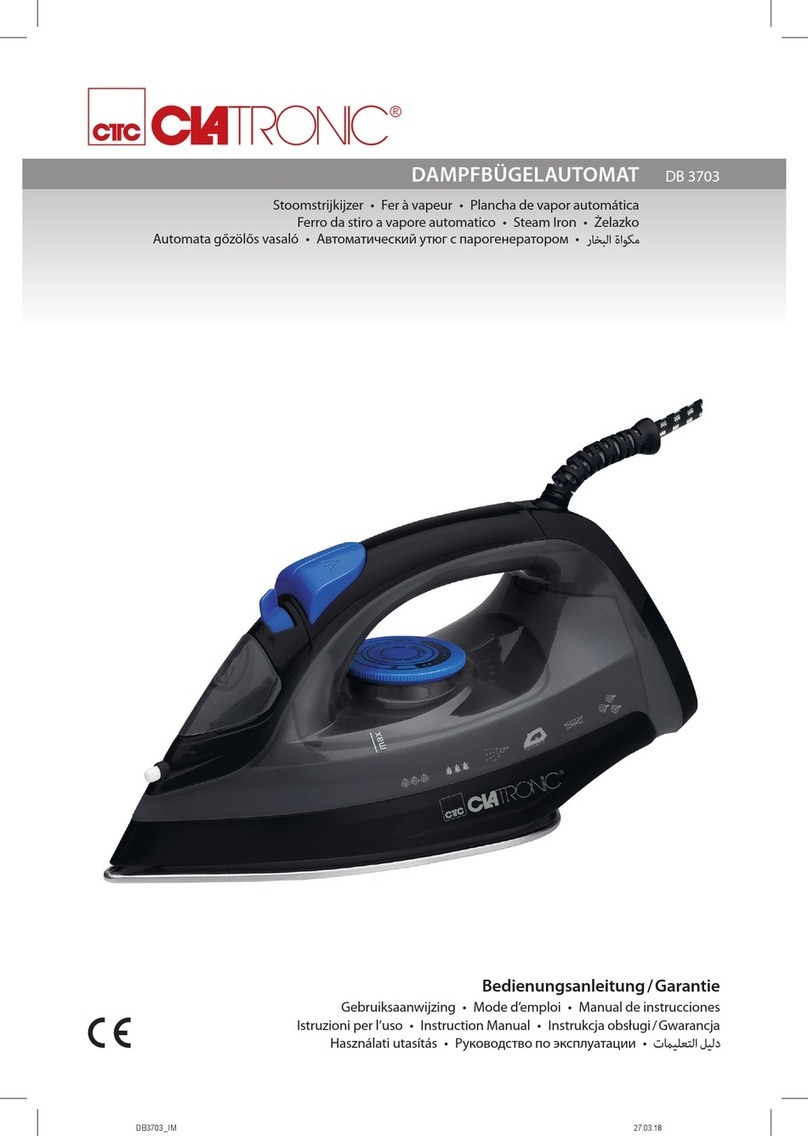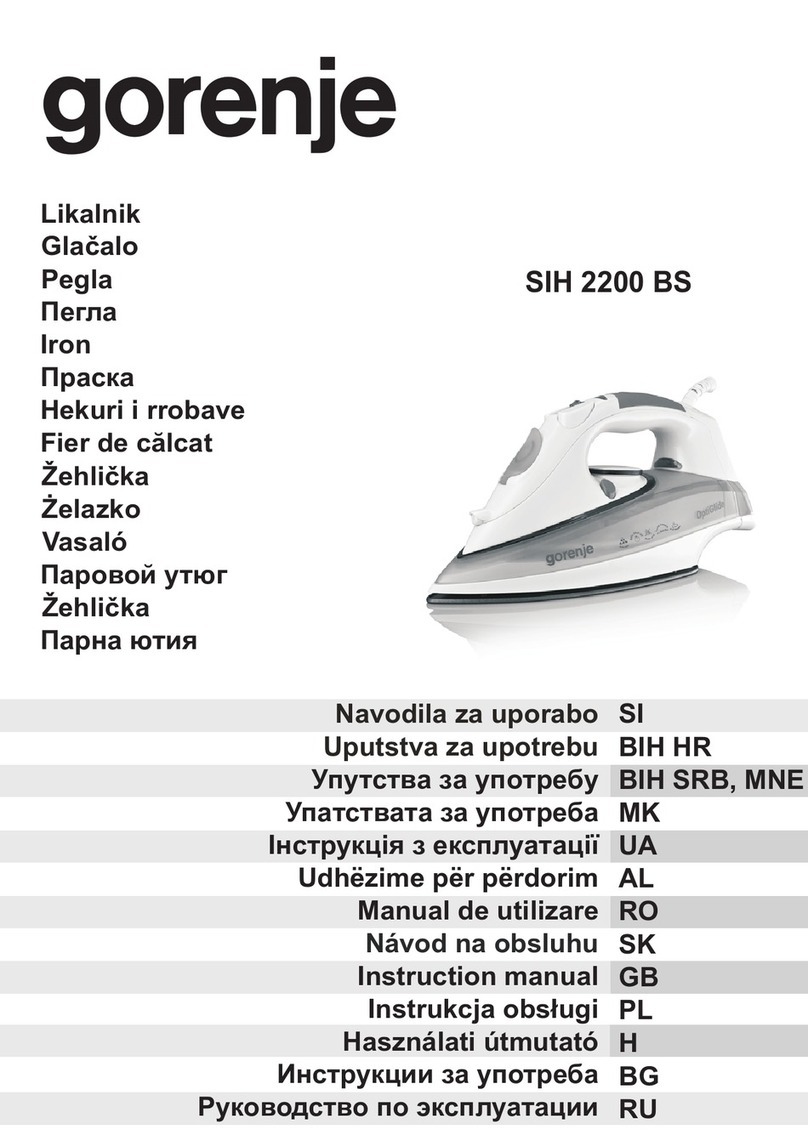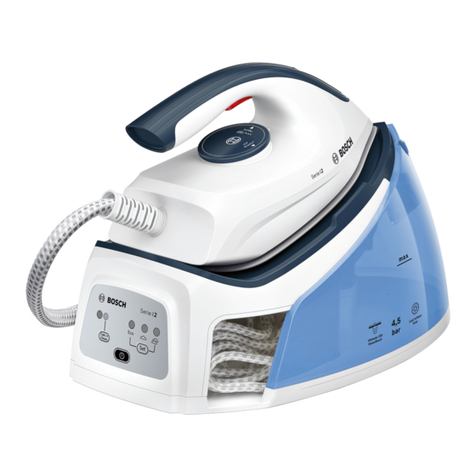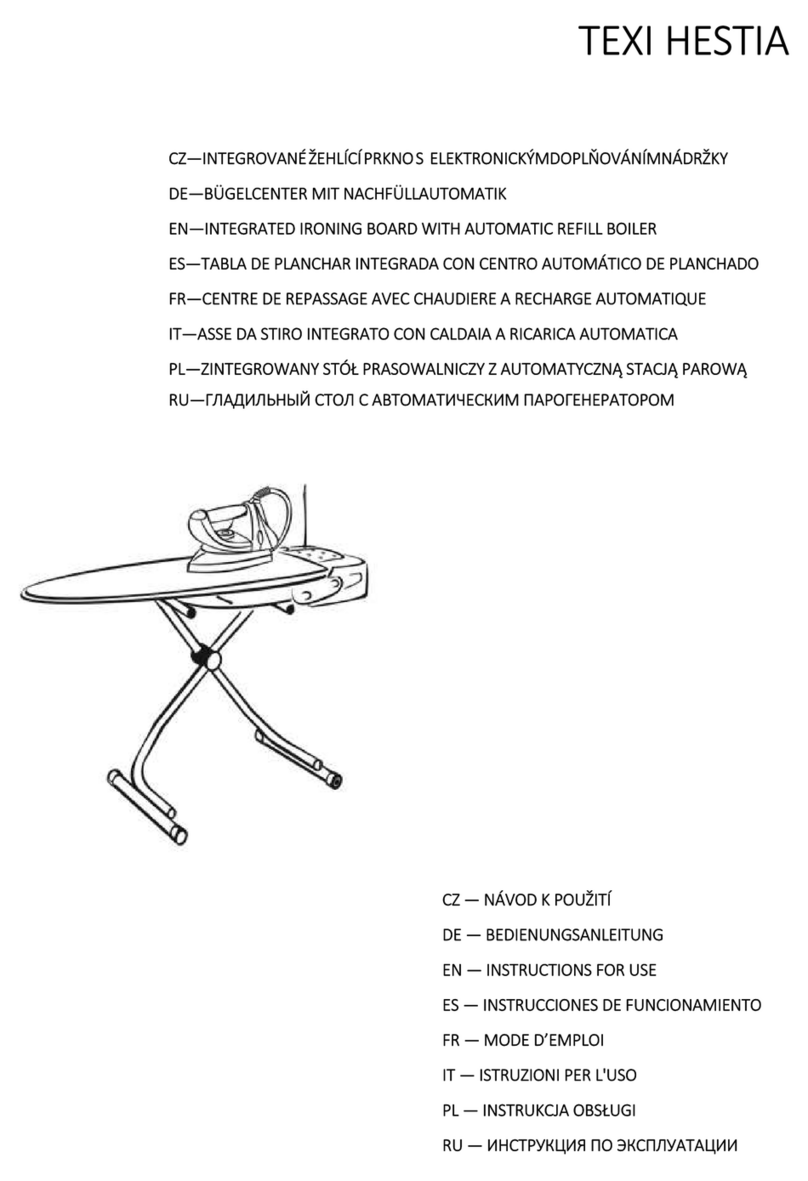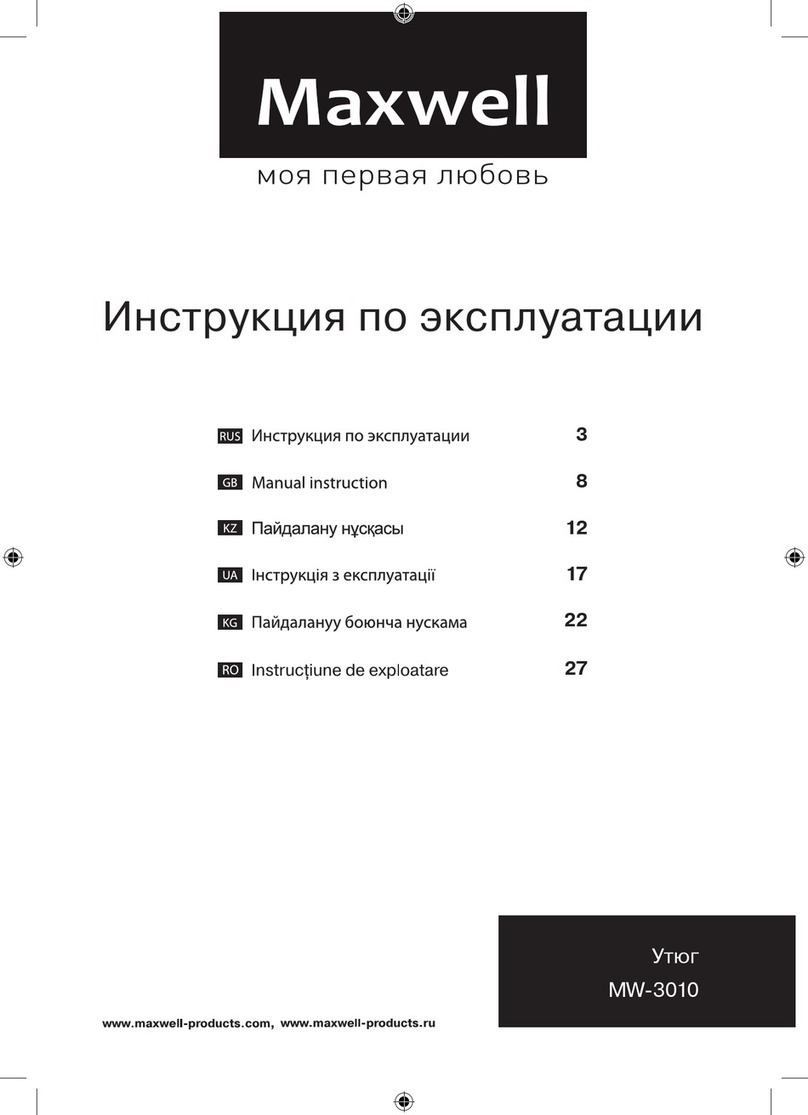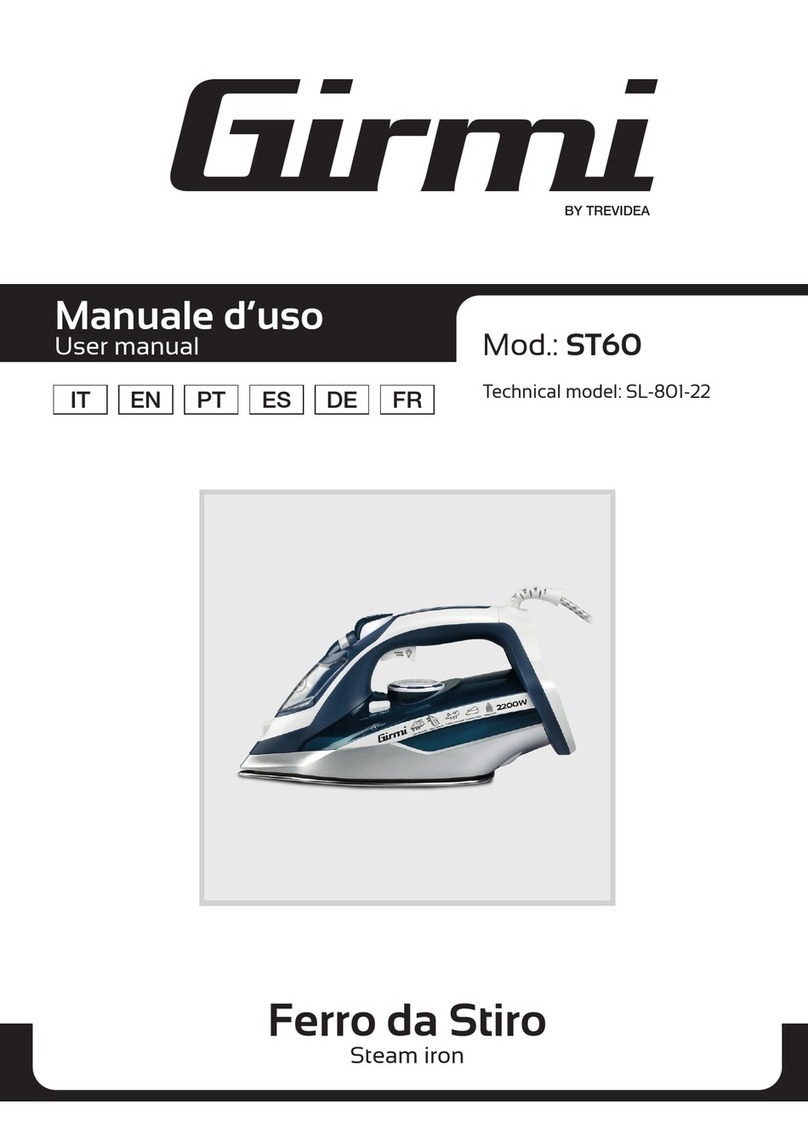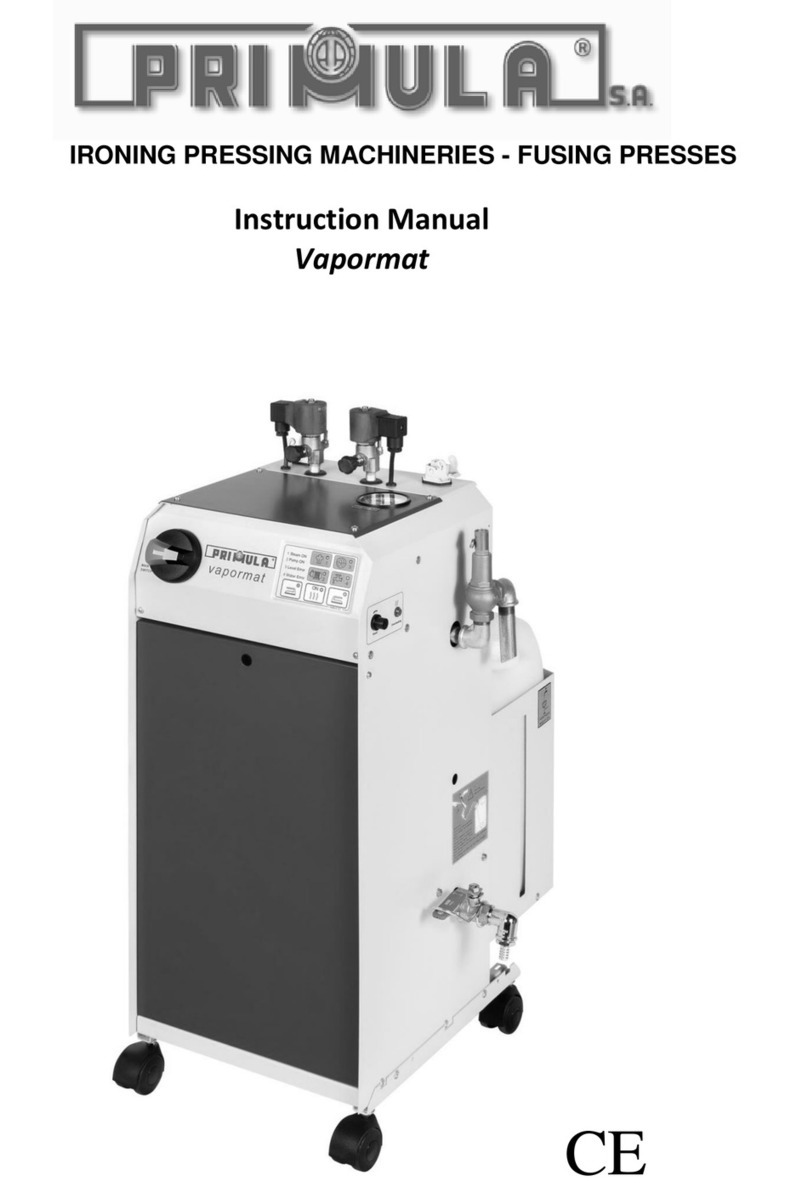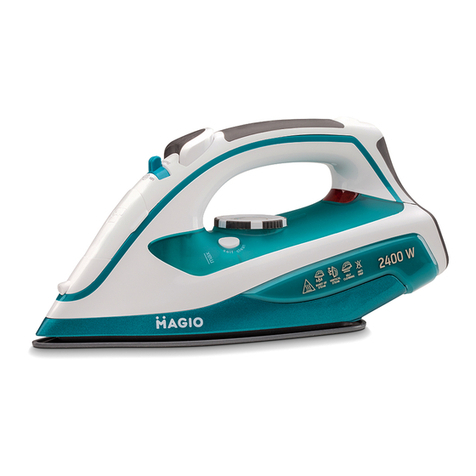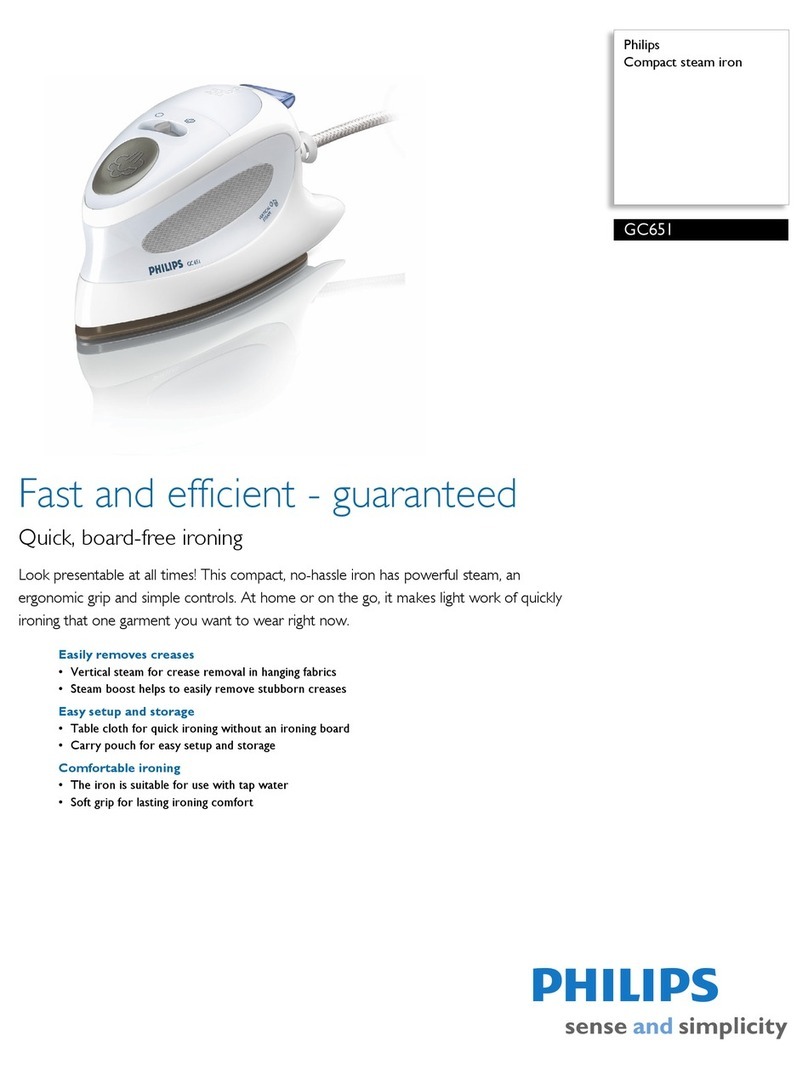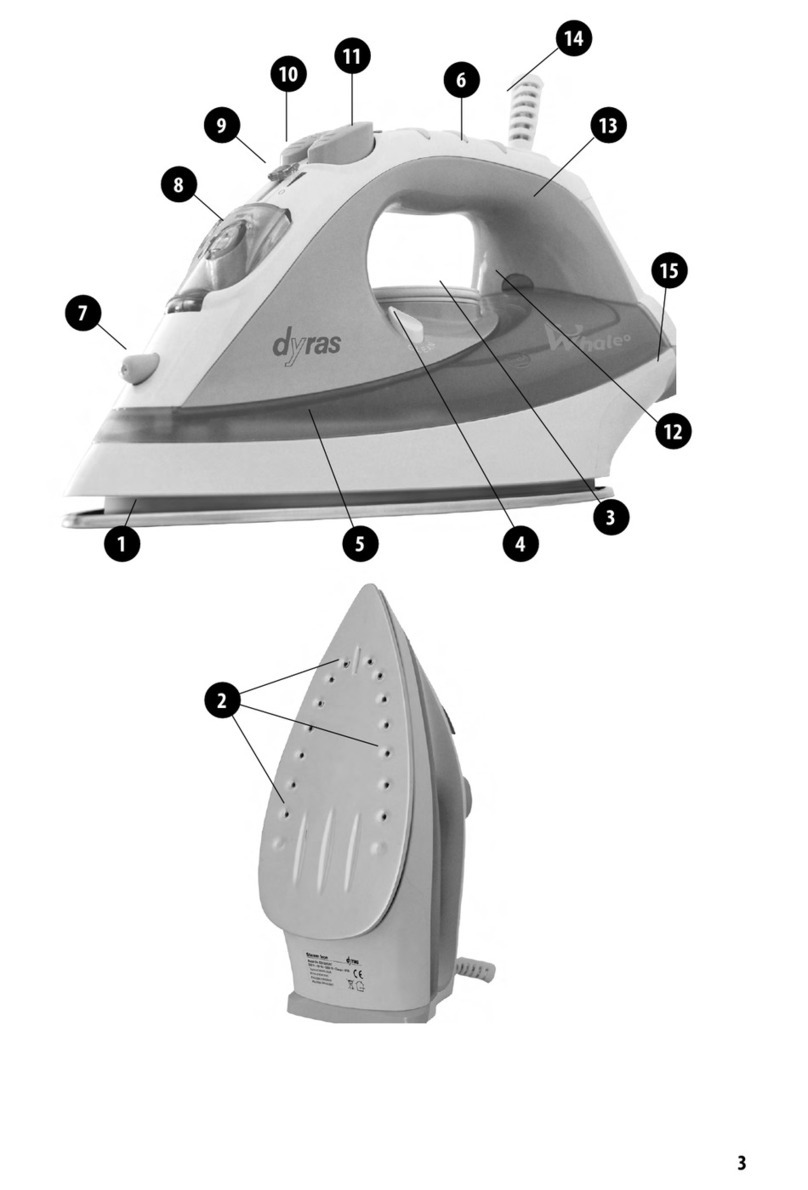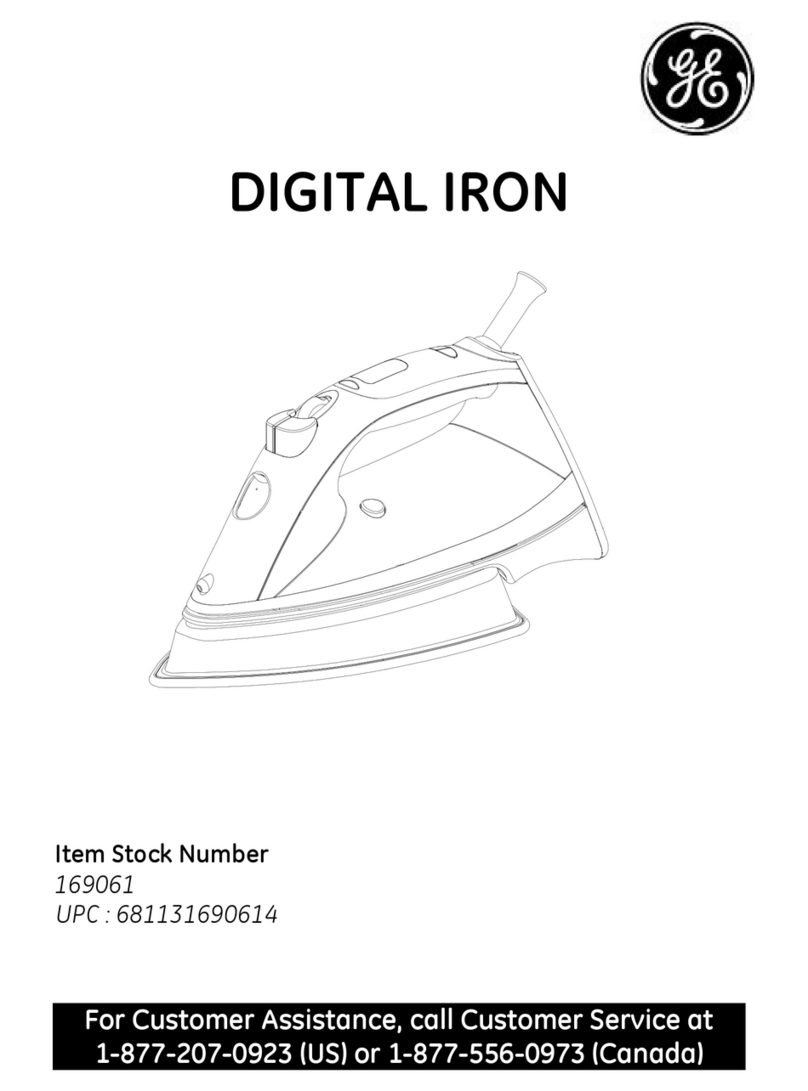Read the operating instructions before
using this machine for the first time.
This way you will avoid the risk of
accidents and damage to the machine.
Correct usage
Only iron materials with this ironer which
are suitable for machine ironing and
which were washed in water.
Technical and electrical safety
This machine must not be operated in
the same room as dry cleaning
machines which use solvents containing
PERs or CFCs.
This ironer must only be operated in a
room with a low relative humidity level.
Any removable outer panels must be
back in place, and all heated, moving or
electrical parts shielded before the machine
is switched on.
Do not damage, remove or bypass the
safety features, fixtures and control
elements of this machine.
Do not use a machine with damaged
controls or cables. These must be
repaired before it is used again.
Repairs to electrical appliances should
only be carried out by a suitably
qualified and competent person in
accordance with local and national safety
regulations. Repairs and other work by
unqualified persons could be dangerous.
Faulty components must only be
replaced by genuine Miele original spare
parts. Only when these parts are fitted can
the safety standards of the machine be
guaranteed.
The electrical safety of this machine can
only be guaranteed if connected to a
correctly installed earthing system on site.
It is most important that this basic safety
requirement is tested regularly, and if there is
any doubt the wiring system should be
checked by a suitably qualified electrician.
The manufacturer cannot be held liable for
the consequences of an inadequate
earthing system (e.g. electric shock).
The machine is only completely isolated
from the electricity supply either when it
is switched off at the isolator switch or the
mains fuse has been withdrawn.
Use
This machine is not a toy! To avoid the
risk of injury never allow children to play
on or near the rotary ironer, or to operate it
themselves.
When the ironer is heated up with the
heater plate in position, there is an acute
danger of burning, if the edge of the heater
plate is touched on the feed out side.
When ironing double layered items, do
not reach in between the layers to
straighten out the fabric. This is extremely
dangerous as you may not be able to extract
your hands in time. The same applies when
ironing garments with pockets.
Do not iron items with fringes, thin ties
and straps etc. These could get tangled
in the feed-in belts and cause a fault.
Do not reach between the feed-in tabling
and the rotating roller. Your hands might
get trapped.
Always keep a fire extinguisher
accessible in the rare event of textiles
igniting.
It is imperative that all local and national
safety regulations concerning the use of
this machine are observed.
Warning and safety instructions
4 M.-Nr. 05 567 240 /03
